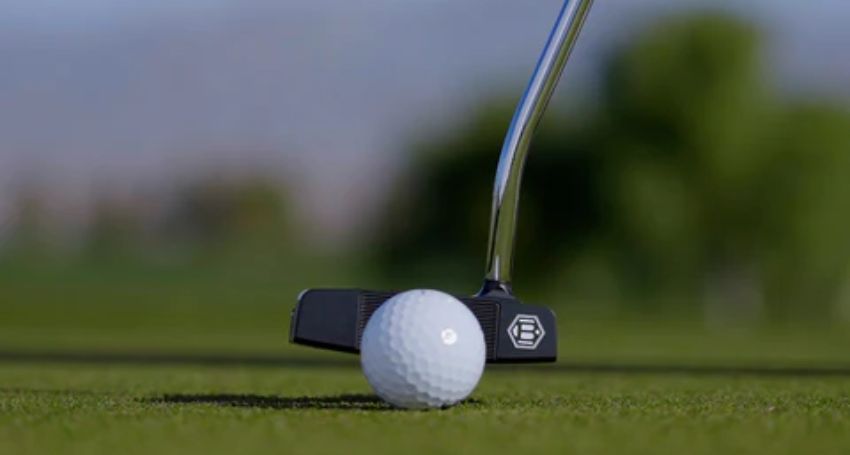Understanding the impact of putter length on your golf game is crucial for improving your performance on the green. In this article, we’ll explore the implications of adjusting your putter’s length, including the vital roles of lie angle and swing weight, and provide tips on how to find the perfect fit for your game.
Introduction to Putter Length Adjustments
Finding the right putter length is an essential part of optimizing your golf game. Many golfers may not realize how crucial this aspect is until they experience the frustrating consequences of using a putter that doesn’t fit them properly. When it comes to putters, the length can significantly impact your stroke, accuracy, and overall performance on the green.
Adjusting your putter can seem straightforward, but it’s important to understand the implications of making it shorter or longer. The right length can enhance your ability to control the putter’s face, while the wrong length can lead to missed putts and frustration. In this section, we’ll dive into why you might want to consider adjusting your putter length and what you need to know before making any changes.
Why Consider a Longer or Shorter Putter
Choosing the ideal putter length can make a world of difference in your game. Here are several reasons why you might consider modifying your putter length:
- Comfort: If you find yourself choking down on your putter, it may indicate that it’s too long. A comfortable grip can enhance your confidence and performance.
- Posture: The right putter length helps maintain proper posture. If your putter is too long, it can force you into an awkward stance, negatively affecting your stroke.
- Consistency: A properly fitted putter allows for a more consistent stroke. Minor adjustments can lead to significant improvements in your putting accuracy.
- Control: A putter that is the right length can help you control the face angle better, which is critical for making putts.
Ultimately, whether you choose to make your putter longer or shorter should be based on your unique playing style and physical attributes. It’s essential to consider these factors to enhance your performance on the course.
Impact #1: Understanding Lie Angle
When adjusting your putter length, one of the most significant factors to consider is the lie angle. The lie angle refers to the angle between the golf shaft and the ground when the putter is resting in its normal playing position. A proper lie angle ensures that the putter’s face is square to the target line at impact.
If your putter is too long, the toe may point upwards, leading to shots that miss left. Conversely, if it’s too short, the toe will point down, resulting in misses to the right. This misalignment can make a substantial difference in your putting performance, particularly on crucial putts.
As mentioned earlier, even a slight adjustment in the lie angle can have a massive impact. If you are unsure about your current lie angle, consulting with a professional golf club fitter can help you achieve the correct setup.
Impact #2: The Importance of Swing Weight
Another critical element affected by putter length adjustments is swing weight. Swing weight refers to how heavy a club feels during the swing, which plays a crucial role in timing and control. When you adjust the length of your putter, the swing weight is also altered, which can affect your ability to square the face at impact.
For instance, cutting down a putter can increase its swing weight significantly, making it feel heavier than before. This change can lead to inconsistencies in your stroke, affecting your overall performance on the green. It’s essential to understand that a change in putter length doesn’t have a uniform effect on swing weight, particularly when compared to other clubs like drivers or irons.
Finding the right swing weight for your putter can take some trial and error. You might find that a slightly heavier or lighter swing weight suits your stroke better. Testing different swing weights can help you discover the most comfortable and effective setup for your game.
Swing Weight Example: The Ping Sigma 2 Putter
To illustrate the impact of swing weight, let’s take a closer look at the Ping Sigma 2 putter. This putter is designed to allow for easy length adjustments, making it a great example for understanding swing weight changes. When you adjust the length of a Ping Sigma 2 putter, you can see firsthand how significant the impact can be.
For instance, starting with a standard 34-inch Ping Sigma 2 putter, you might find that it has a swing weight of D2. If you were to extend it to 35 inches, the swing weight could change dramatically, potentially reaching E2 or higher. This change can feel substantial and may require adjustments to your stroke to maintain control.
Understanding how swing weight works and how it’s affected by length adjustments can help you make informed decisions about your putter. It’s always wise to consult with a professional if you’re unsure how these changes may impact your game.
How to Fix Swing Weight Issues
Adjusting your putter length can sometimes lead to swing weight issues that can affect your putting performance. Fortunately, there are ways to address these challenges effectively.
First, understanding the relationship between your putter’s length and its swing weight is crucial. If you’ve shortened your putter and feel it has become too heavy, you can reduce the swing weight by removing weight from the head or using lighter grips. On the other hand, if you’ve lengthened your putter and it feels too light, adding weight to the head can help restore balance.
Here are some practical steps you can take to fix swing weight issues:
- Assess Your Current Setup: Use a swing weight scale to determine your putter’s current swing weight. This provides a baseline for adjustments.
- Use Lead Tape: Adding lead tape to the back of the putter head is a common method to increase swing weight. Start with small increments and test your putter after each addition.
- Change Grips: Switching to a heavier grip can influence swing weight. Consider trying different grip weights to find the right balance for your putting style.
- Consult a Professional: If you’re unsure about making these adjustments, consulting a professional club fitter can provide valuable insights and help you achieve the perfect swing weight.
Determining the Correct Putter Length
Finding the correct putter length is essential for optimal performance. A putter that is too long or too short can lead to inconsistent strokes and missed putts. Here’s how to determine the ideal length for your putter:
- Set Up Your Stance: Stand in your putting stance with your feet shoulder-width apart. Hold the putter in a natural position.
- Check Your Grip: Grip the putter normally and observe where your hands rest. Ideally, your hands should be in a comfortable position without having to choke down excessively.
- Eye Position: As mentioned earlier, your eyes should be about two to three balls inside the ball. This positioning helps with alignment and ensures a better stroke.
- Measure for Length: Use a measuring tape to measure from the butt end of the putter to the top part of your hands. Subtract about a quarter inch to account for grip thickness.
- Test and Adjust: After determining your ideal length, test it on the green. If necessary, make adjustments until you find the perfect fit.
Testing Your Putter Length: A Step-by-Step Guide
Once you have an idea of your ideal putter length, it’s time to put it to the test. Here’s a simple step-by-step guide to ensure your putter length is optimal:
- Gather Your Equipment: You’ll need your putter, a measuring tape, and a few golf balls.
- Set Up a Target: Place a target (like a cup or a marker) about 10 feet away on the green.
- Take Your Stance: Position yourself as you would for a normal putting stroke with your new putter length.
- Make Several Putts: Roll a series of putts towards the target. Pay attention to your comfort level and the consistency of your strokes.
- Analyze Your Results: After making 10-15 putts, evaluate your performance. Are you making consistent contact? Are you comfortable with the length?
- Make Adjustments if Necessary: If you feel the need to adjust the length again, repeat the process until you find what works best for you.
Final Thoughts on Putter Adjustments
Optimizing your putter length and swing weight can significantly enhance your putting performance. Remember that every golfer is unique, and what works for one person may not work for another. The key is to experiment and find what feels right for you.
Whether you’re making adjustments yourself or consulting with a professional, ensure you’re aware of how each change affects your game. Don’t hesitate to seek help from a fitting expert to make sure your equipment is tailored to your unique swing.
For more information on improving your golf game, check out our guide on custom club fitting. Understanding how to fit your clubs can make all the difference in your performance on the course.
Frequently Asked Questions
1. How do I know if my putter is the right length?
If your putter feels uncomfortable or you find yourself choking down excessively, it may be too long. Conversely, if you feel you have to stretch to reach the ball, it may be too short. Testing various lengths and consulting a professional can help determine the right fit.
2. Can I adjust my putter length myself?
Yes, you can adjust your putter length yourself if you have the right tools and knowledge. However, for swing weight adjustments and lie angle modifications, it’s recommended to seek help from a professional club fitter.
3. What is the ideal swing weight for a putter?
The ideal swing weight varies by individual preference and putting style. Generally, a swing weight between D2 to D6 is common for most putters. Testing different swing weights can help you find what feels best for your game.
4. How often should I check my putter length and swing weight?
It’s good practice to check your putter length and swing weight whenever you change your stance or grip, or if you experience changes in your putting performance. Regular evaluations can help maintain optimal performance.
5. Why is custom fitting important for my putter?
Custom fitting ensures that your putter is tailored to your specific swing characteristics, height, and posture. This can lead to improved accuracy, consistency, and overall performance on the greens.





























































